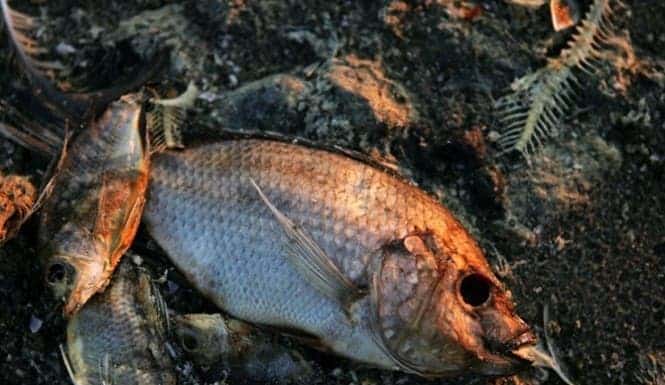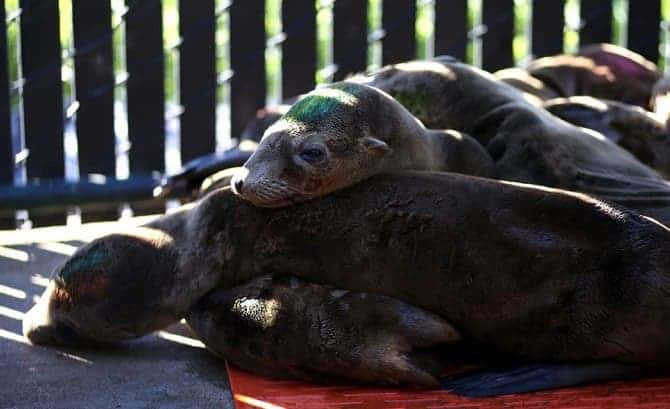Sea animals are dying off in huge numbers off the Pacific coast from Baja, Mexico – all the way to Alaska; there’s a good chance we can’t really do anything about it.

The warm expanse appeared about a year ago and the longer it lingers, the more risks it poses, and the more animals it kills. It’s a combination of natural and man-made causes that work together and are killing off bottlenose dolphins, sardines, sea birds, plankton, krill, salmon, sea lions, starfish, and brown pelicans in record numbers. To make things even worse, the high temperatures are also wiping off plankton and krill, the bottom of the food chain.
“Right now it’s super warm all the way across the Pacific to Japan,” said Bill Peterson, an oceanographer with NOAA’s Northwest Fisheries Science Center in Newport, Ore., who has linked certain ocean indicators to salmon returns.
This year alone, sea birds like Cassin’s auklets, who eat plankton, have been washing ashore by the tens of thousands. Bottlenose dolphins are also killed in worrying numbers, and the number of salmon returning to spawn in their native rivers and streams has been has reduced by half. Brown pelicans have reportedly stopped breeding altogether.
Laura Jurgens, a postdoctoral researcher at Temple University and Smithsonian Institution contributed to a study that documented this massive issue, and she did an AMA (Ask Me Anything) over on Reddit. She comments on the risk of extinction and damage to wildlife:
In the particular event we describe in our study, the species affected aren’t expected to be in immediate danger of extinction, even though regional populations of the little six-armed sea star and purple urchins were functionally wiped out of a large area of coastline. That said, the best, most recent science suggests that extinctions of marine species are increasing dramatically (see McCauley and colleagues paper from Jan 2015, covered in the NYT and presented at http://www.sciencemag.org/content/347/6219/1255641[1] ) due to multiple, interacting (and mostly human-driven) impacts. These include overfishing, destruction of seafloor habitat, agricultural nutrient runoff, and the joint CO2 pollution problems of climate warming and ocean acidification. Fixing these problems is urgent for marine species (and all of us as humans who depend on our oceans for food, livelihoods, and climate control).”

By now, there seems to be overwhelming evidence that we are heading towards a major, global extinction – one that we, humans, are causing. This is not just the media exaggerating or hyping out this die-off; sadly, die-offs are becoming more and more common as years pass and global temperatures continue to rise.
“There are quite a few lines of evidence that mortality events are increasing in frequency and possibly severity, at a rate greater than could be explained by observer bias alone. Scientists generally take that kind of thing into account and most natural and earth scientists are much more overcautious than otherwise. The most recent science has quite conclusively demonstrated an increase in the types of disturbances that drive these mortality events too, including severe storms, heat waves, harmful algal blooms, and disease outbreaks,” Jurgens concludes in her AMA.
Journal Reference: Laura J. Jurgens et al. Patterns of Mass Mortality among Rocky Shore Invertebrates across 100 km of Northeastern Pacific Coastline. Published: June 3, 2015DOI: 10.1371/journal.pone.0126280






